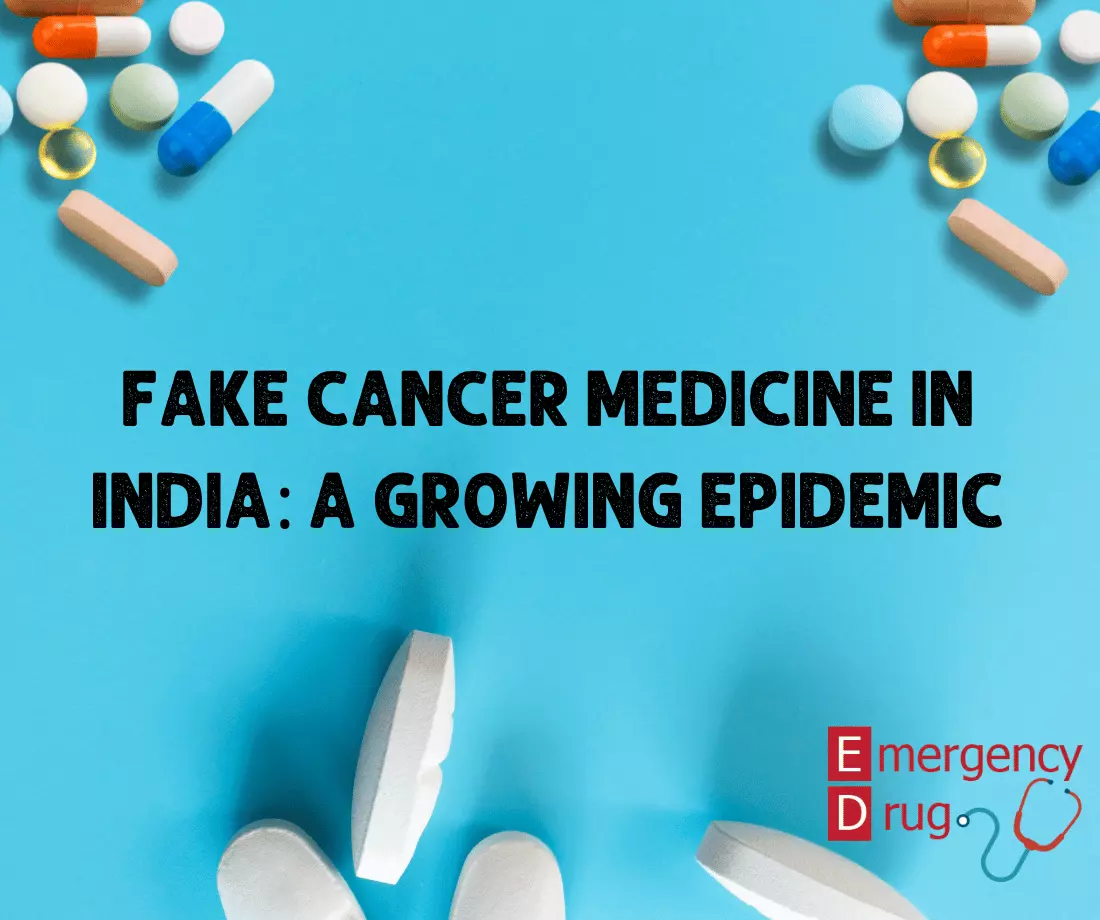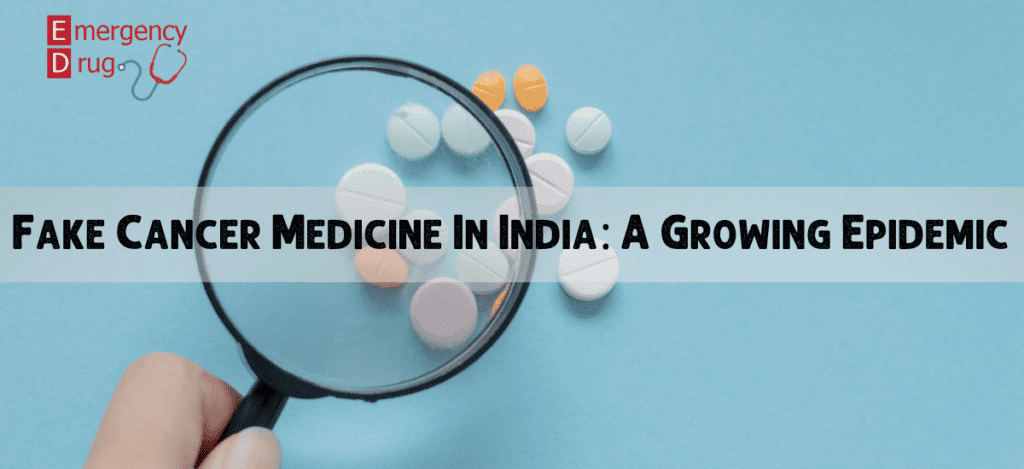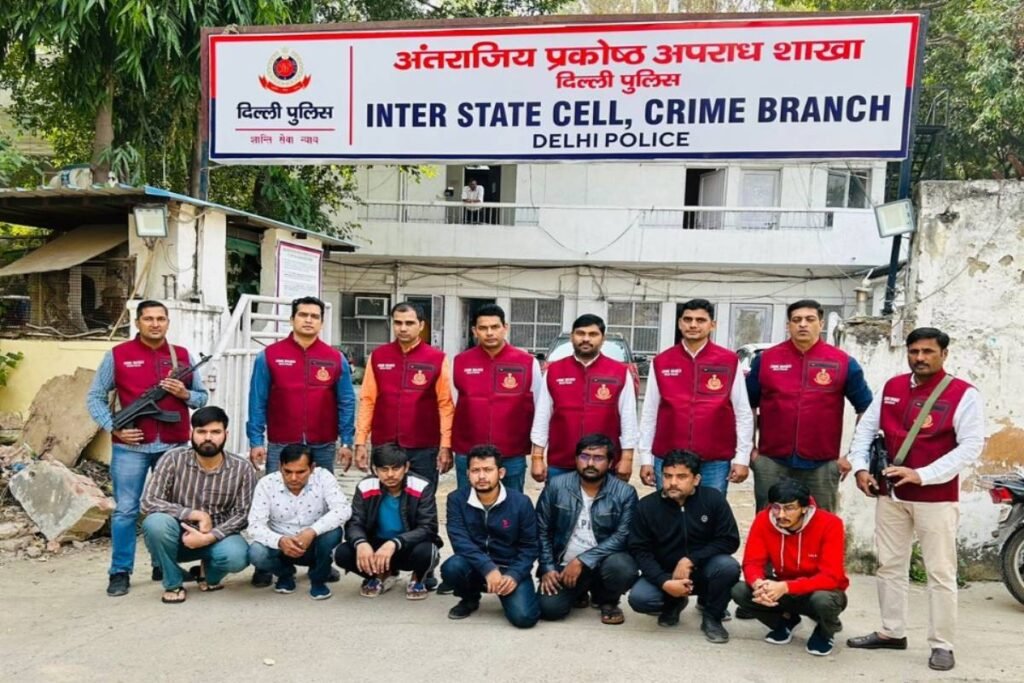Fake Cancer Medicine In India: A Growing Epidemic
Hasan
01 Sep, 2025

Table of Contents
Fake Cancer Medicine
Someone buys some lifesaving medicine for a patient. Instead of saving, that medicine only makes that sufferer die even faster. It is too ironic. Well, it is because the patient might have taken fake drugs, generally known as ‘counterfeit medicine.’ People worldwide depend on medicine to manage chronic illnesses, prevent pregnancy, and treat life-threatening diseases like cancer.
What are Counterfeit Medicines?
The counterfeit medicines are made and packaged to look identical to genuine brand-name medicines. In a word, spurious medicines are an imitation of the original medicine and the packaging. But they typically contain little to no active chemicals mentioned on the label. Patients who are unaware of the unlawful supply chain are the major victims. These phony medications usually don’t have therapeutic value since they lack the necessary active ingredients.
The worst thing is that some contain harmful ingredients. In a report, Interpol says, “Some phony medications have been found to include mercury, arsenic, rat poison, or cement. “Alarmingly, even in developed countries, people unknowingly take fake drugs every day despite highly controlled healthcare systems.
In reverse, they risk their lives. Relevant international and local authorities, the pharmaceutical sector, and international medication regulators always keep an eye on it. Sadly, fraudsters are on the go to play hide and seek. Such inhumane works, like manufacturing and selling fake cancer drugs, have been occurring in various places, largely in India. It has been happening there for a long time, although authorities have taken several serious actions against those rackets. Furthermore, these culprits are even trading fake cancer drugs internationally.

Who are they faking, and what manufacturing labels are they pretending?
Several studies have shown that these gangs frequently forge Bangladeshi-labeled medicines. Why? Because Bangladesh is now one of the few countries making quality drugs at an affordable price, they export a huge portion of drugs after covering about 97% of the local needs. Over the past two decades, the industry has seen three times the profits from selling generic drugs globally. Related article : The Pharmaceutical Industry in Bangladesh: A Huge Driving Force
However, India can also copy already available drugs on the market without paying costly fees to the patent owners. It’s permission given to the country by the World Trade Organization. Bangladesh is doing far better than them. They are booming in contrast to others. Every year, the rate of exporting medicines increases by 24%, a rapid increase. The affordability and quality are making Bangladesh stand out in the competition. Indian gangs are using this opportunity and faking Bangladesh-made lifesaving cancer drugs. The kingpins are working with or maybe leading the international fake drug manufacturing groups.
The victims of fake cancer drugs
Who are the victims of this inhumane deed? The patients are indeed the primary victims of this heinous crime. Fake drugs quicken their deaths. But the original manufacturer and legal traders are also suffering a lot. People who once took counterfeit drugs tend to mistake the original labels. Hence, reliability and reputation go down. Although local and international law enforcers and authorities have been taking strong and rapid action to stop the business of fake cancer drugs and other drugs, the rackets are absconding and exploring new ways of committing fraud.
How are counterfeit drugs made?
A variety of factors make fake drugs potentially harmful. They could have been fabricated or intentionally given incorrect labels. The number of active ingredients is frequently incorrect. The elements may be more or less completely absent. Some false medications have been found to include poisons, mercury, or arsenic. A few years back, WHO introduced the terms “substandard” and “falsified medical items,” replacing the commonly known “counterfeit medicines.”
Substandard medications, for example, are authorized medical items that do not fulfill the manufacturer’s quality requirements, such as expired or improperly maintained pharmaceuticals. Falsified pharmaceuticals, in contrast, are medical items that “deliberately mislead their identity, composition, or source,” such as approved drugs that have been stolen and resold, illegal fake drugs that seem like brand-name products, or fake drugs that do not contain the active component specified on the product label.
Who are the fraudsters?
Surprisingly, they are professionals and skilled. In the recent actions taken by Indian law enforcers, they are allegedly real doctors, pharmacists, and other relevant officers and workers. From top to bottom, impostors are everywhere, right? Interestingly, the gang is committing this fraud in an organized way. Experienced doctors, fellow medical students, and shady pharmaceutical companies work together in a chain. They are lured in by a huge amount of money and grab the chance quickly.

Can anyone identify the fake medicines?
False pills resembling tablets are typically packed in high-quality shells and packages. A scientific test is sometimes the only way to isolate them from the real ones. Nonetheless, it is essential to use caution when purchasing medications, especially online. Experts and concerned people suggest never buying medicines from unreliable websites or markets.
Only authorized vendors holding are reliable in this regard. Before you go to the shop, check the list of licensed dispensaries at your local health regulatory agency. It will help clear up any doubts. Remember, both online and offline providers are subject to this. And you know, online vendors are riskier because you can only analyze the product after receiving the package in your hands.
Purchase only the medications prescribed by your doctor or health care provider. Make sure the website requests a prescription when you shop online. Avoid making purchases from websites that issue prescriptions based on questionnaires or don’t have a pharmacist you can contact. Vendors that offer lucrative promotions and discounts should also be avoided. There are some reliable and recognized websites where you can check the price, ingredients, and amounts. Compare the cost to similar items you generally buy. If it is significantly less expensive, it is probably a fake.
Analyze the product and the package very carefully. Try matching the drugs with your prescription. A drug is fake if it includes excessive amounts, insufficient amounts, or other substances. Drugs with different characteristics or adverse effects; have an irregular form, size, flavor, or color; are incorrectly labeled or have no labeling at all; or any combination of these. It may have expired; it may need instructions on how to keep the medication. The package appears to be faulty or damaged. The packaging or instructions include typographical, spelling, or grammatical problems.
Final WordsIn a nutshell, fraudsters are always there to manufacture and trade counterfeit medicines on the market. The good thing is that concerned authorities have recovered fake drugs and are taking strong initiatives to stop them. However, we, the customers, should always be aware of fake cancer medicines before dragging a patient to a quick death. Only self-awareness can save the day. To read more article visit our Blog
